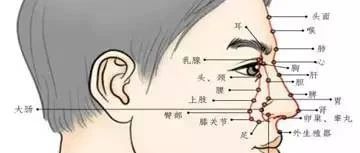Facial Diagnosis
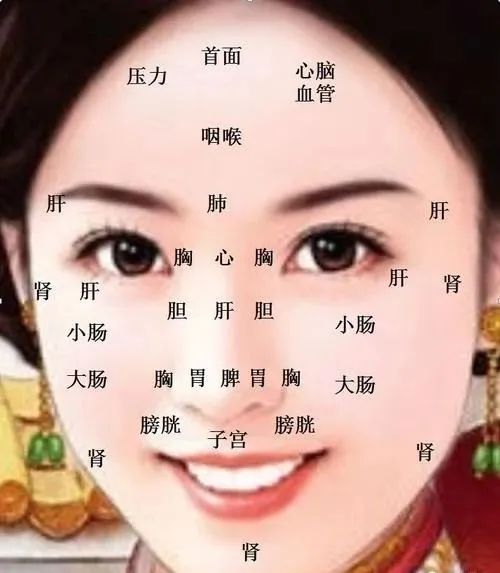
The face is a holographic reflection of various parts of the body and diseases. Each part of the body is not independent but interconnected and mutually restrictive, from the five internal organs (wǔ zàng) to the limbs and skin, down to the nine orifices and hair. If one part experiences a pathological change or discomfort, it can disturb or affect other parts, even the whole body.
The various areas of the face represent or reflect not just the local area but also the reflex zones of the five internal organs on the face.
We can naturally infer a person’s mental and health status from their facial complexion, as well as whether their daily routine is normal. Once facial issues arise, adjusting the five internal organs can resolve the problems manifested on the face.
Head and Face: The midpoint of the forehead. Indications: Head and facial diseases, brain diseases.
Throat: The midpoint between the head and the lungs. Indications: Pharyngitis, plum pit qi, etc.
Lungs: The midpoint between the two eyebrows. Indications: Cough, asthma, and other respiratory diseases.
Heart: Located at the lowest point of the nasal bridge. Indications: Palpitations, insomnia, etc.
Liver:: The midpoint connecting the heart area and the spleen area. Indications: Liver diseases and pain in the flanks.
Gallbladder: Located on both sides of the liver area. Indications: Cholecystitis, gallstones, etc.
Spleen: Located at the tip of the nose. Indications: Poor appetite, abdominal distension, indigestion, etc.
Stomach: Located on both sides of the spleen. Indications: Stomach pain, vomiting.
Bladder: Corresponds to the location of the water ditch point. Indications: Lower back pain.
Uterus: Overlaps with the bladder area. Indications: Dysmenorrhea, pain in the genital area.
Large Intestine: Located below the zygomatic arch. Indications: Constipation, abdominal pain, diarrhea, etc.
Small Intestine: Located on the inner side of the zygomatic bone. Indications: Diarrhea.
Kidney: Intersection of the horizontal line of the nostrils and the vertical line of the temples. Indications: Enuresis, etc.
Umbilicus: Slightly below the kidney area. Indications: Periumbilical abdominal pain.
Chest (Breast):: Slightly above the inner canthus of the eye. Indications: Chest fullness, chest tightness, etc.
Eye Diagnosis
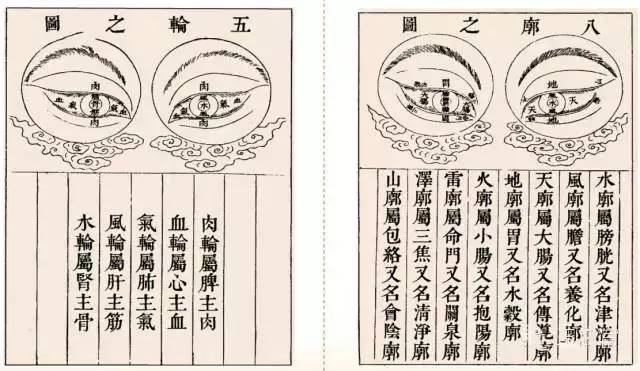
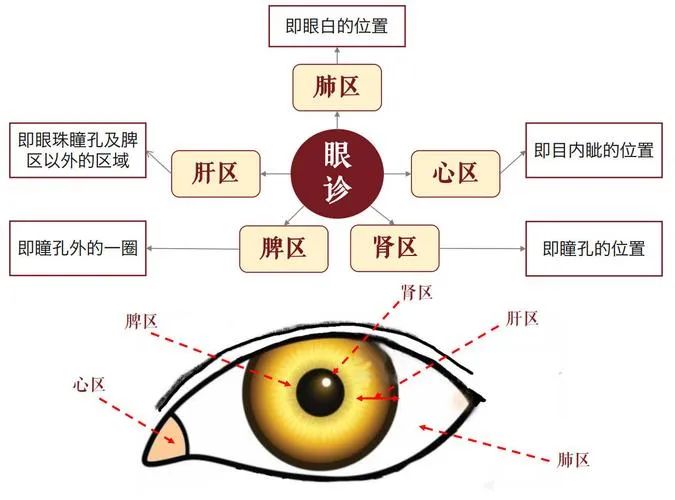
The Five Wheel Theory: Based on the Five Elements perspective, the eye is divided into five parts: inner wheel, blood wheel, qi wheel, wind wheel, and water wheel, each corresponding to specific organs, explaining the physiological and pathological mechanisms of the eye, guiding clinical diagnosis and treatment.
The Eight Trigrams Theory: Divides the eye according to the positions of the Eight Trigrams, associating them with the six fu organs, pericardium, and mingmen. When eye diseases occur, observing the position, color, thickness, and quantity can provide a basis for treatment.
Nasal Diagnosis
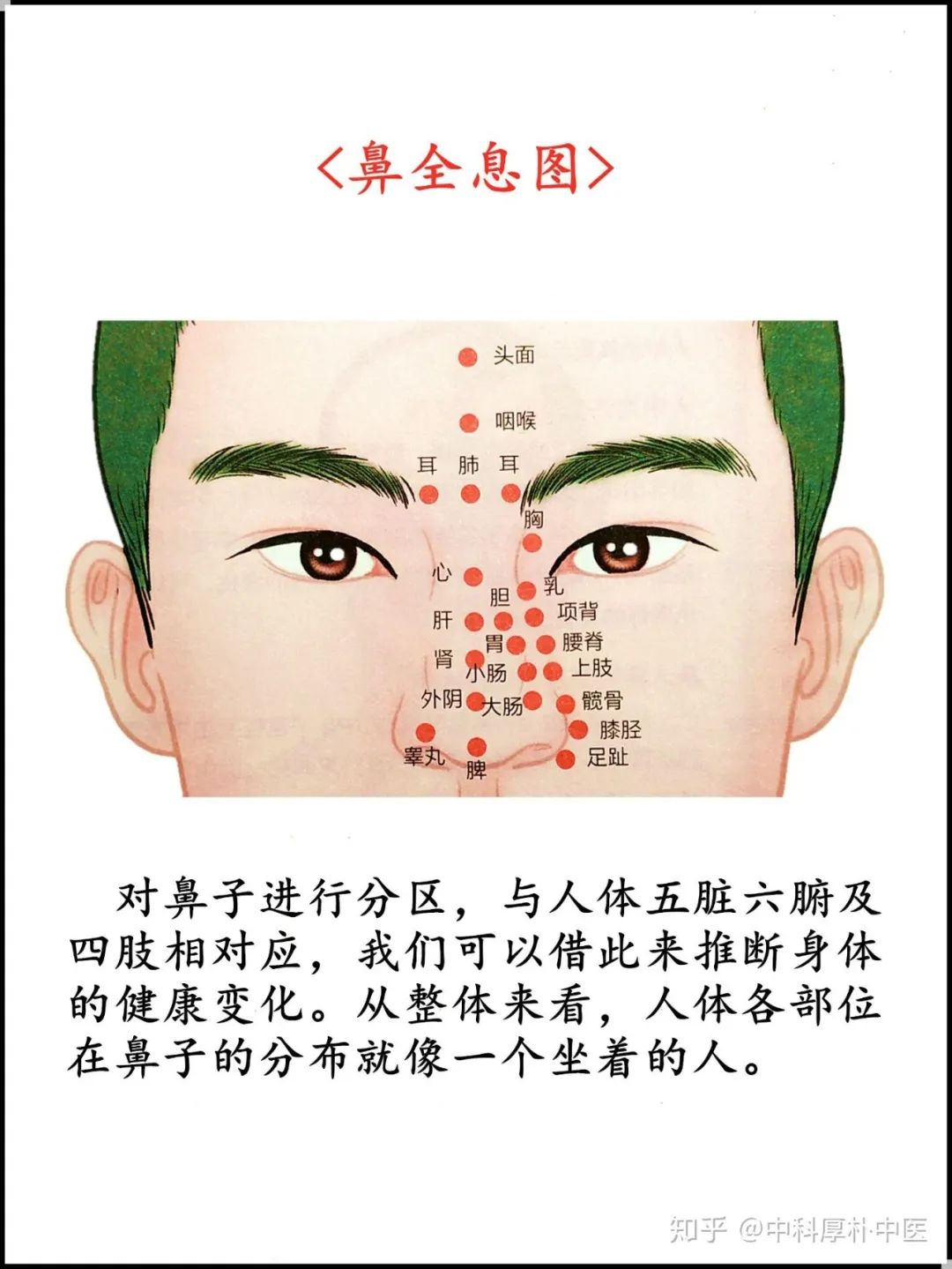
The nose is a microcosm of the organ systems, with specific corresponding areas for each organ reflected in the nose, systematically reflecting the physiological and pathological conditions of the organ systems.
Ear Diagnosis
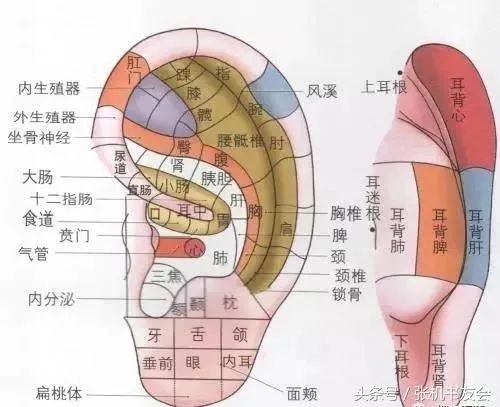
Holographic ear therapy is derived from acupuncture based on the theory of meridians in Traditional Chinese Medicine. By conducting through ear acupoints, it fundamentally regulates the qi and blood flow of the patient’s organs, unblocking the meridians to achieve the goal of treating the root cause of diseases.
Lip Diagnosis
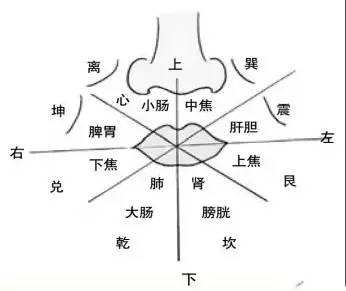
The lips are the hub of the fourteen meridians, a crucial point for the organs. We use the Eight Trigrams diagram to illustrate the correspondence between the organs and the lips.
Tongue Diagnosis
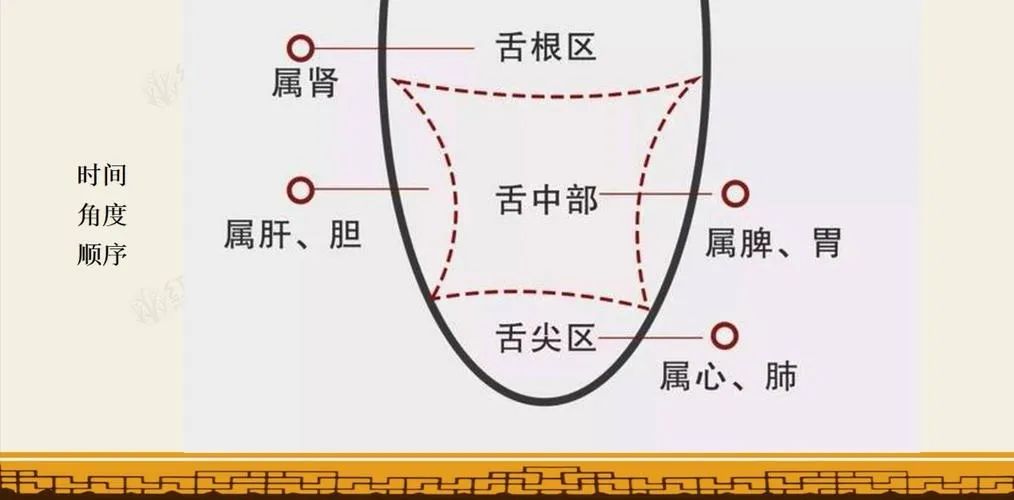
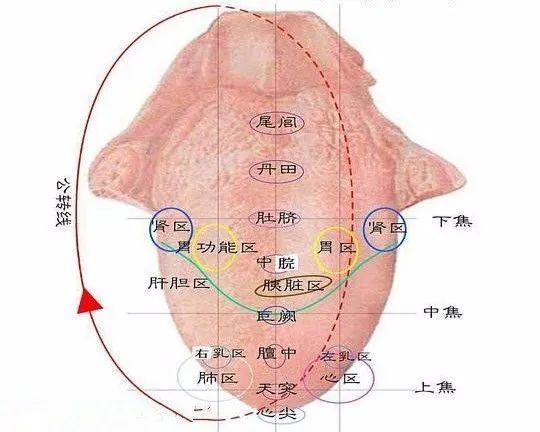
Tongue diagnosis is an important method in Traditional Chinese Medicine for diagnosing diseases. The tongue is connected to the five internal organs through meridians, allowing us to understand the deficiency or excess of the organs and the nature, severity, and changes of pathogenic factors.
Tooth Diagnosis
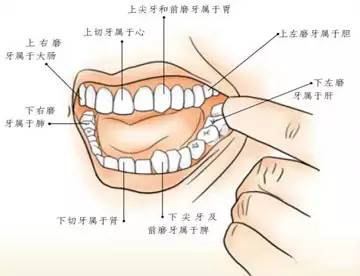
Traditional Chinese Medicine believes that “teeth are the remnants of bones,” and “gums are the network of the stomach.” Teeth are closely connected to the internal organs through numerous meridians.
The upper incisors belong to the heart, the lower incisors belong to the kidneys; the upper canines and premolars belong to the stomach, the lower canines and premolars belong to the spleen; the upper left molars belong to the gallbladder, the lower left molars belong to the liver, the upper right molars belong to the large intestine, and the lower right molars belong to the lungs.
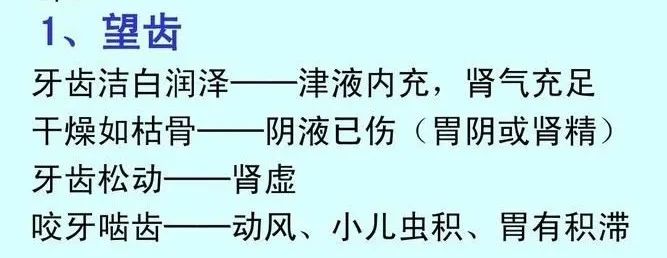
 Copyright Statement:This content and images are compiled from the internet, for non-commercial use. If there is any infringement, please contact the editor to delete it. Please indicate the source when reprinting.Reminder:The above content is for reference only and may not be suitable for all populations. It is recommended to adjust under the guidance of a physician.
Copyright Statement:This content and images are compiled from the internet, for non-commercial use. If there is any infringement, please contact the editor to delete it. Please indicate the source when reprinting.Reminder:The above content is for reference only and may not be suitable for all populations. It is recommended to adjust under the guidance of a physician.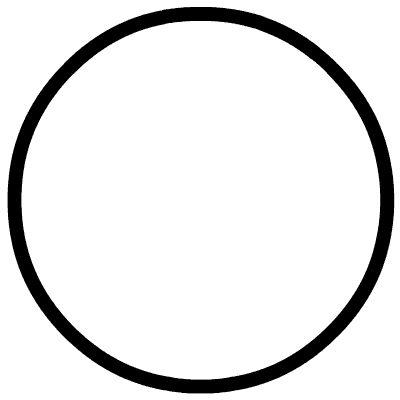 Acupoint Inquiry
Acupoint Inquiry

